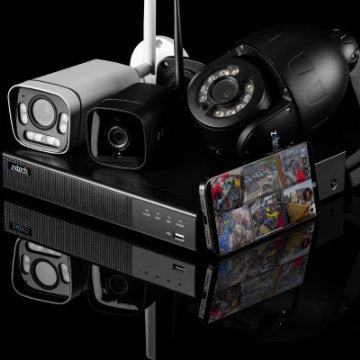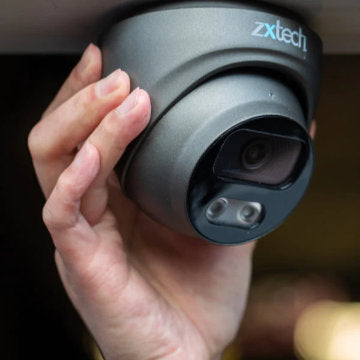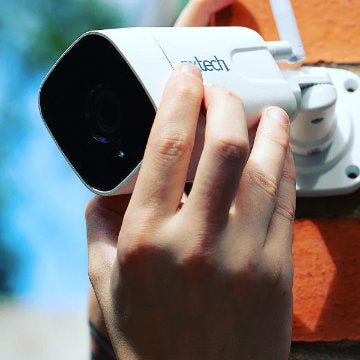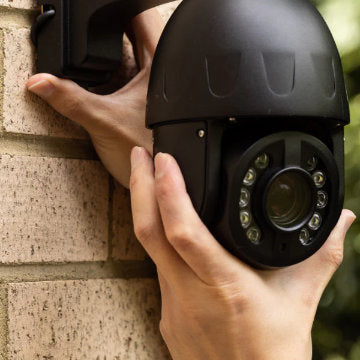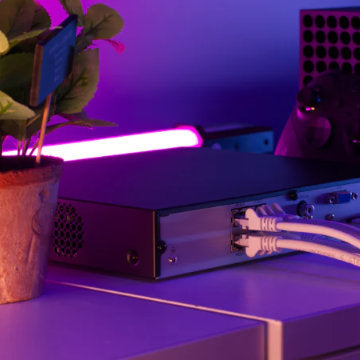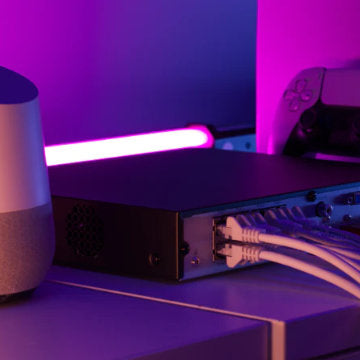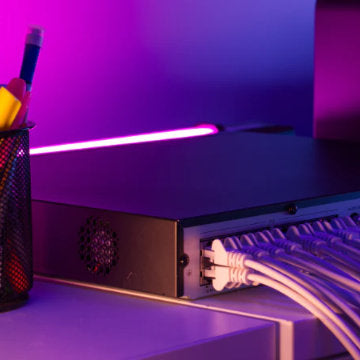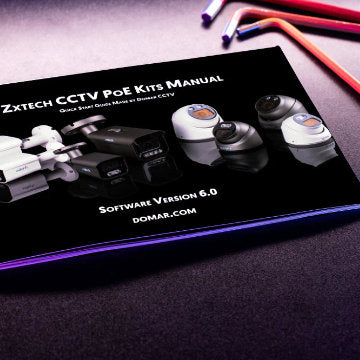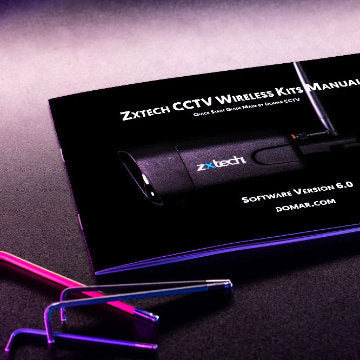CCTV Camera Wireless Antenna 3dB, 5dB, and 8dB Explained
How Does Antenna Gain Affect Your Wireless Connection?
When it comes to wireless antennas, the terms 3dB, 5dB, and 8dB refer to antenna gain, which gauges the efficiency of an antenna in transmitting or receiving signals in a given direction. It's crucial to understand that a higher number doesn't necessarily mean a stronger signal. Instead, the suitability of a given gain value depends on the nature of your installation. Let’s go deeper:
dB (Decibel):
A logarithmic unit that describes a ratio. For antennas, the term 'gain' often reflects how adeptly an antenna can direct the signal power in the intended direction during transmission.
Think of the decibel like the volume control on your TV or radio. It represents how "loud" or "strong" something is. In the antenna world, this "loudness" refers to how focused your signal is.
Antenna Gain:
This doesn't amplify the signal's power but narrows its focus. A higher gain channels the energy more precisely, enhancing its reach in a targeted direction, though possibly diminishing its overall breadth.
Imagine using a flashlight. A low gain is like a lantern giving off light in every direction but not very far. Higher gain is like a focused flashlight beam – it shines farther but in a more concentrated area. This doesn't mean the flashlight is more powerful; it's just directing its light differently.
Use Case for 3dB, 5dB, and 8dB Antennas:
3dB Antenna:
With its moderate gain, it yields a more spherical, "bubble-like" coverage. Ideal for scenarios requiring multi-directional coverage, like in a central room. In smaller setups, like homes or offices where cameras are spread out connecting to a wireless router, this gain is optimal.
5dB Antenna:
This boasts a higher gain, creating a more directional signal than a 3dB antenna. Suitable for larger homes or places like corner shops, where cameras are relatively distant from the wireless router. Due to its narrower signal path, you may need to adjust the antenna carefully for optimal connection.
8dB Antenna:
The highest gain among the three. Its signal is very directional, making it perfect for long-distance connections, such as between two distant buildings. While it ensures a robust connection, achieving the best results might require careful alignment.
How Do 3dB, 5dB, and 8dB Antennas Differ in Reach and Coverage?
The signal angle and distance for 3dB, 5dB, and 8dB antennas are influenced by their gain values. In general, the higher the gain (measured in dB), the narrower the beamwidth (or signal angle) but the longer the reach (or distance). However, it's important to note that antenna gain doesn't increase the total power of a signal; it merely focuses it.
-
3dB Antenna:
- Beamwidth (Signal Angle): Wider than higher gain antennas. It's more omnidirectional, providing a bubble-like coverage.
- Distance: Moderate reach. Suited for broader coverage over a shorter distance, such as within a room or small house.
-
5dB Antenna:
- Beamwidth (Signal Angle): Narrower than a 3dB antenna, but broader than an 8dB antenna.
- Distance: Longer reach than a 3dB antenna, but not as far as 8dB. Suited for medium distances, such as within a larger house or small commercial space.
-
8dB Antenna:
- Beamwidth (Signal Angle): Quite narrow, focusing the signal in a more specific direction.
- Distance: Longest reach among the three. Ideal for longer point-to-point connections, such as between distant buildings or across a large property.
Analogical Explanation of 3dB, 5dB, and 8dB Antennas:
- A 3dB antenna is like a flashlight with a broad beam that doesn't shine incredibly far but illuminates a large area right in front of you.
- A 5dB antenna is like narrowing the flashlight's beam a bit; it shines a bit further but covers a slightly smaller area.
- An 8dB antenna is like focusing the flashlight into a very tight beam; it shines the farthest but illuminates the smallest area.
In summary, as the dB value escalates, the antenna's signal becomes more focused, stretching farther in a particular direction, but potentially limiting its width.
However, always remember: A higher gain (or dB value) isn't universally better. Choosing the right antenna is a balance between your desired coverage area and the signal's distribution needs.
How to point the wireless antenna correctly?
Pointing a wireless antenna correctly can be crucial to achieving optimal signal strength and connectivity. Here are some tips to ensure you're positioning your wireless antenna effectively:
-
Know Your Antenna's Pattern: Understand if your antenna has an omnidirectional (signal radiates in all directions) or directional (signal radiates in a specific direction) pattern. You will understand this by now from above explanation.
-
Vertical Position for Omnidirectional: For typical home routers with omnidirectional antennas, it's usually best to position them vertically. This is the most case in the CCTV system.
-
Minimize Obstructions: Always try to minimize the number of walls and obstructions between the antenna and the devices it's connecting to. This might mean placing your router on an upper floor, or in a more central location in your home or office.
-
High Placement: Position the antenna higher up, as this can help in achieving a clearer line-of-sight to other devices, especially for outdoor antennas.
-
Use Antenna Extension Cables: If the device's location is fixed and non-optimal (e.g., because of cables or power sources), consider using extension cables to place the antenna in a more suitable position.
-
Avoid Interference: Other electronic devices or large metal objects can interfere with wireless signals. Keep your antenna away from other electronics, metal file cabinets, and similar items.
-
Fine-tuning: After initial positioning, use the signal strength indicator on the connected device or specialized tools/apps to fine-tune the antenna's direction for the best signal.
-
Regularly Test and Adjust: Over time, external factors can change and impact your signal. Periodically test and adjust your antenna's positioning to ensure optimal performance.
-
Consider External Antennas: If you're using a device with an internal antenna and having issues, consider using an external antenna. They often provide a better signal and allow for more precise adjustments.
-
Stay Updated: Ensure your wireless equipment, especially routers, have the latest firmware updates. Sometimes performance can be enhanced with software adjustments.
Remember, the goal is to achieve a stable and robust connection. Regularly checking and adjusting your setup can go a long way in maintaining the best possible signal strength.


